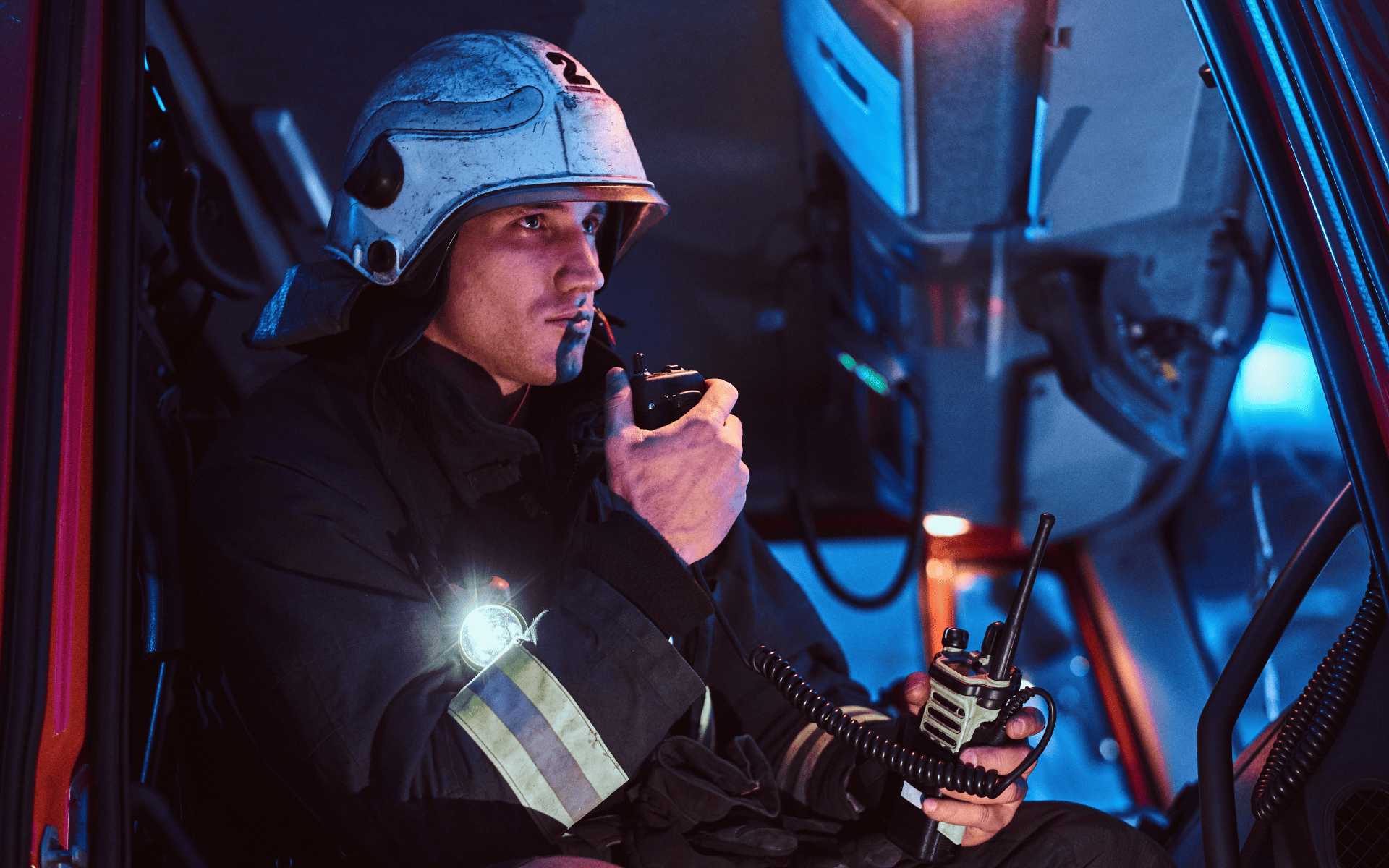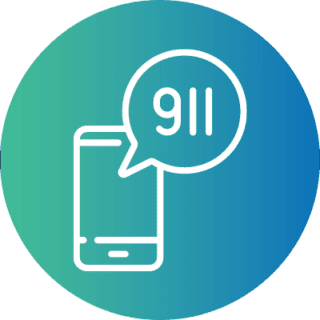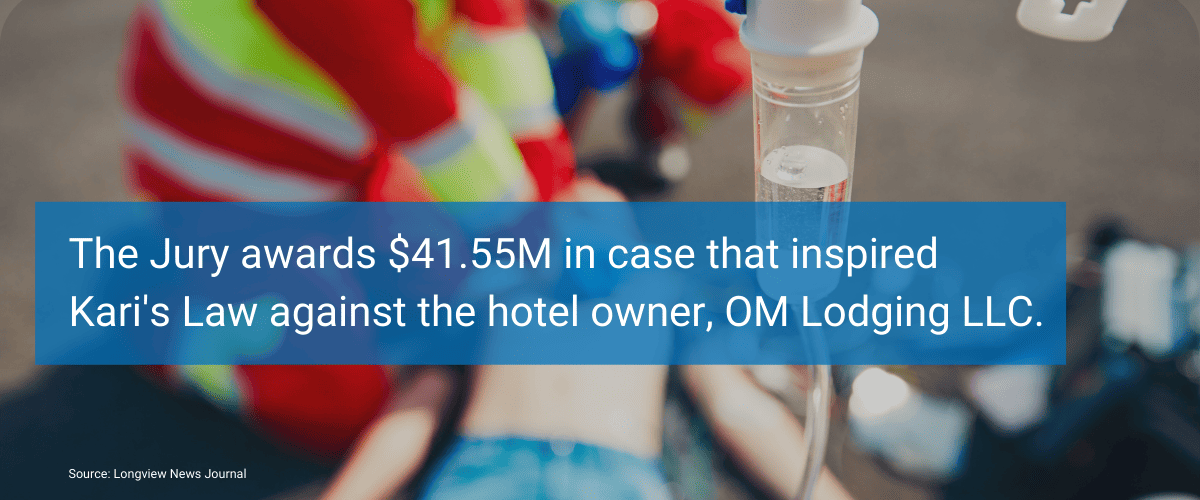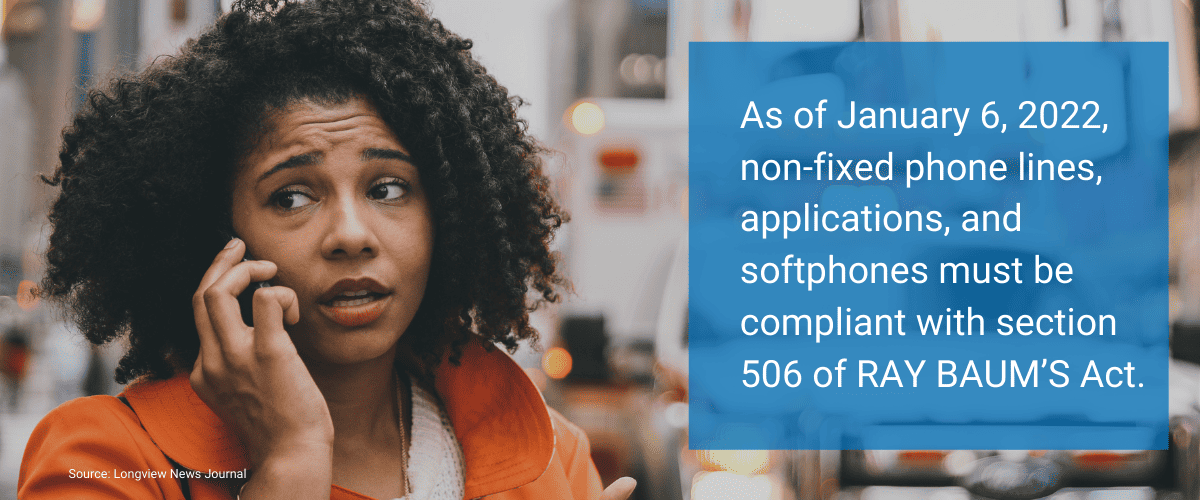
Emergency 911 (E911) compliance is not a problem for tomorrow. If you are a telecom provider, your top priority should be making sure your customers’ multi-line telephone systems (MLTS), which are typically found in offices, schools, hotels, etc., are compliant with emergency 911 regulations. The date is fast approaching: As of January 6, 2022, non-fixed phone lines, applications, and softphones must be compliant with section 506 of RAY BAUM’S Act. Do you have a compliance strategy mapped out?
All telecommunication providers systems are required to be capable of connecting with 911 regardless of what type of phone or service they use. But is your business also familiar with Kari’s Law and RAY BAUM’s Act? These laws, which were passed with overwhelming bipartisan support, are intended to ensure the public has greater access to emergency services and improve the potential for better emergency response outcomes. Non-compliance may have costly legal ramifications, so if your phone lines or calling applications aren’t already compliant with these new laws, it’s time for your IT team to get on board!
Learn the essentials of these new laws, what you as a telecommunication provider need to know, and how to become and stay compliant.
What Is RAY BAUM’S Act?
When there is an emergency, you need your phone to transmit the precise location of the call so you can be found quickly.
RAY BAUM’S Act requires all calls to 911 transmit the caller’s “dispatchable location” to the public safety answering point (PSAP), regardless of the communications platform used. The dispatchable location includes the calling party’s street address and any other information (building, floor, room, etc.) needed to precisely identify the caller’s location, so emergency responders know exactly where to go. That way, when someone calls 911 from a hotel room, emergency responders know which building, floor, room number the call came from.
What Is Kari’s Law and Why Is It So Important from a Telephony Standpoint?
Kari’s Law, which was enacted after the tragic death of Kari Hunt, requires that 911 calls placed over an MLTS will go through without requiring a prefix to reach an outside line and that a notification be sent to a central location to identify staff that emergency responders are on their way.
Location compliance for landlines is not new; however, with the expansion of communication tools allowing users to make calls from desktops and tablets, location detection and compliance are more complex for service providers. The FCC enacted both Kari’s Law and RAY BAUM’s Act, that call for new functionality that ensures the public has greater access to emergency services and improves the potential for better emergency response outcomes.
Kari’s Law requires multi-line telephone systems (MLTS), which are typically found in enterprises such as office buildings, campuses, and hotels (but could also be a home office with more than one line) be preconfigured to:
- Enable callers to dial 911 directly, without requiring a prefix such as “9” to reach an outside line.
- Send a notification to a central location at the facility, like a front desk or security office, when an emergency call is made. MLTS includes solutions like on-premises PBXs and cloud PBX/unified communications as a service offerings.
Who Does Kari’s Law Apply to? (3 E911 Requirements for VoIP Providers)
Kari’s Law applies to any organization that uses MLTS in the US, but exemptions may apply for systems used by government or healthcare facilities, among others. If your network utilizes an MLTS that is not preconfigured to dial 911 without a prefix or send a notification, then this law applies to your business! Service providers must make sure their customers’ networks and equipment are compliant
If you are an interconnected VoIP provider, there are unique requirements for E911:
- When providing voice communication access to the public switched telephone network (PSTN), you must have a 911 service. Your clients may not “opt out” of this emergency calling functionality.
- You must set up an accurate emergency address with the service and give your clients the means to modify these addresses when necessary.
- If you make a 911 call, the phone number, name, and address must be provided with the call. Emergency call routing data is required, even if the designated public safety answering point (PSAP) does not have access to or capability of receiving or processing location or callback data.
Ensuring Your Company is Fully E911 Compliant
Compliance is important to protect people. And non-compliance carries with it fines. One of the first things a business should do to ensure they are fully E911 compliant is to contact their carrier. It is important for businesses to find out if their provider offers a 911 service, and what costs may be associated with the service. By using an industry-leading cloud communications platform, service providers can often bypass the effort and time to ensure compliance as the carrier would manage it on their behalf.
Service Provider E911 Compliance
Emergency services cannot wait. If your emergency service technology is out of date, first responders may be prevented from responding in a timely and effective manner.
There are a few things you can do to make sure your services are compliant:



Dispatchable Location
The dispatchable location sent with a 911 call is the same information that was entered when the phone number was activated. For this reason, it’s important to enter accurate and detailed location information (such as the building, floor, suite numbers, etc.) and always keep that information up to date.
Direct-Dial
If you provision your own devices or have a PBX utilizing Alianza’s SIP Trunking product, work with your installers, managers, admins, etc. to make sure your MLTS devices and PBX are configured to allow direct-dial 911 access.
Device Update
At this time, Kari’s Law applies only to telephone systems purchased or installed after February 16, 2020; they do not require you to retroactively update any existing systems. However, it’s a good idea to do it anyway in case an emergency does occur.
Alianza Can Help You Stay E911 Compliant!
In an emergency, every moment counts. You likely have customers who use an MLTS to service large enterprises such as office buildings, hotels, hospitals, and schools. Making your business voice solutions compliant with these new laws doesn’t have to be overwhelming. Alianza’s Cloud Communications Platform makes it easy for service providers and their business customers in the U.S. to be in full compliance with new laws and changing regulations.
In addition to the 911 address validation our platform performs as accounts and phone numbers are being created, we also support these features:
- Next-Gen 911. When a 911 call is placed, the calling phone number’s dispatchable location is sent to the public service answering point (PSAP). The dispatchable location includes not only the street address but also the floor, room number, or other information needed to identify the caller’s location, as entered in the phone number’s E911 record.
- End User Management. Users can update their own E911 address in the Voice Portal without contacting you.
- Pre-Configured. All devices configured and provisioned by Alianza will dial emergency services directly when either “911” or “9911” is dialed.
- Email and SMS. When a call to 911 is placed from any number on the MLTS, an Emergency Call Notification (email and/or SMS text message) is sent to designated recipients so they can be made aware of the situation, provide any immediate assistance, and prepare for the arrival of first responders.
- Continual Updates and Innovation. States and counties are changing to different interfaces and technologies at different times. We provide you with a future-proofed solution that manages the complexities of 911 system updates and ongoing compliance requirements.
Additional Resources
FCC Fact Sheet: Implementing Kari’s Law and Section 506 of RAY BAUM’S Act





